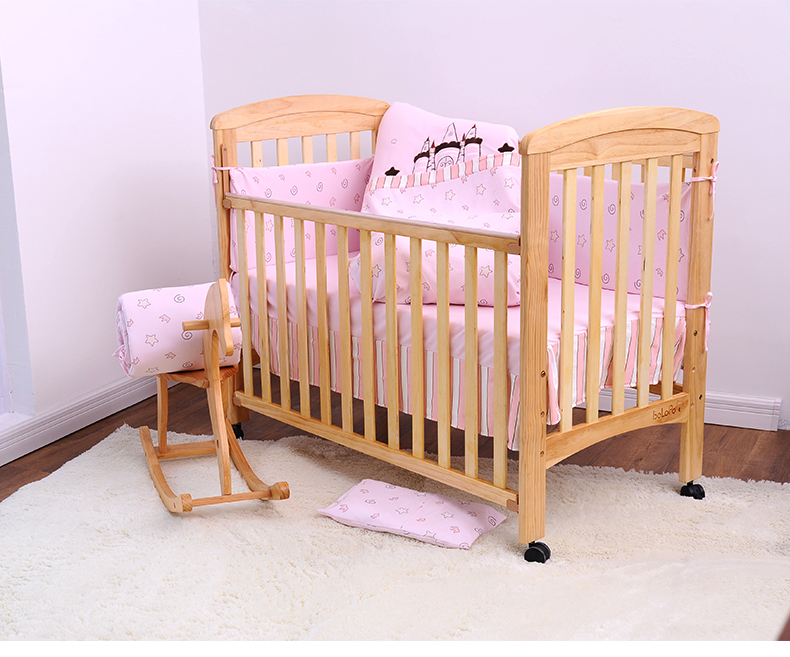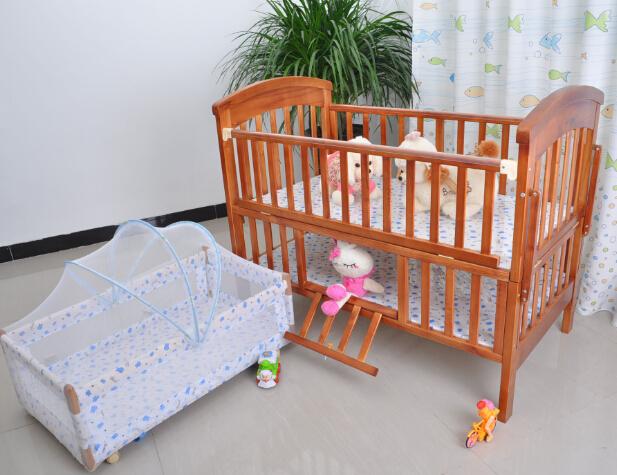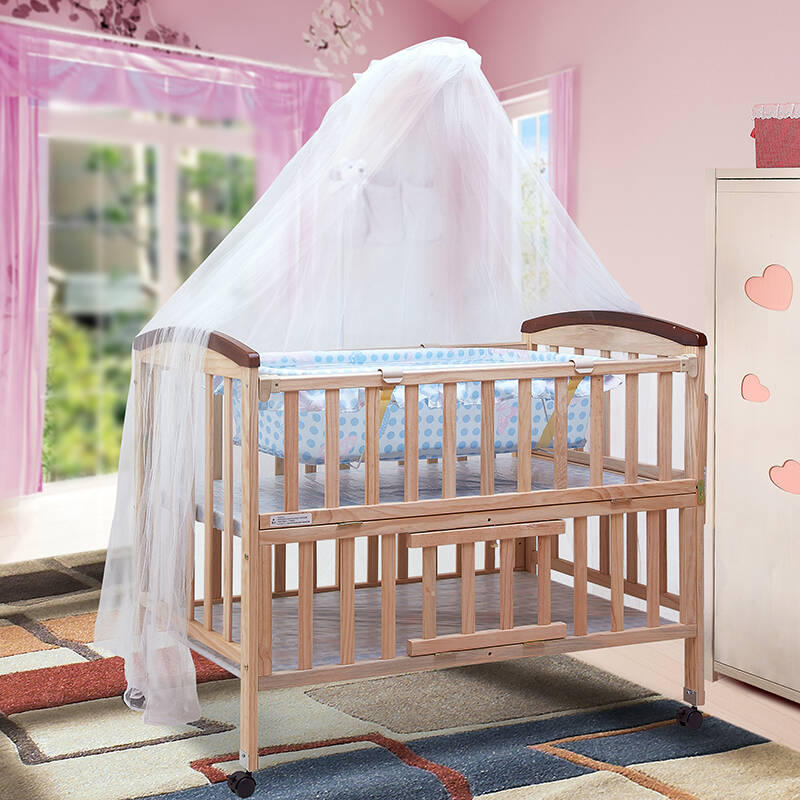Preparing for the arrival of a new baby involves numerous decisions, from selecting the perfect stroller to choosing the right nursery furniture. Among the essential items for a baby’s room, the cribs stands out as a cornerstone piece. In this article, we delve into the world of nursery essentials and explore what exactly a crib is, its purpose, types, safety considerations, and tips for choosing the perfect crib for your little one.

Defining the Crib: A Safe Haven for Sleep
A crib is a specialized bed designed specifically for infants and young children, providing a safe and secure sleeping environment. Unlike adult beds, cribs feature high sides or railings to prevent babies from rolling out and ensure they remain contained while sleeping. Cribs typically have a simple, sturdy frame made from materials such as wood or metal, with slats or bars along the sides for ventilation and visibility.

Types of Cribs: From Standard to Convertible
There are several types of cribs available on the market, each with its own unique features and benefits:
- Standard Cribs: These traditional cribs are the most common type and come in various styles and finishes. They typically have fixed sides and are designed to accommodate a standard crib mattress.
- Convertible Cribs: Convertible cribs are versatile and adaptable, with the ability to transform into different configurations as your child grows. They can convert from a cribs to a toddler bed, daybed, or even a full-size bed with the use of conversion kits.
- Mini Cribs: Mini cribs are smaller in size compared to standard cribs, making them ideal for smaller spaces such as apartments or nurseries with limited square footage. Despite their compact size, mini cribs still provide a safe and comfortable sleeping environment for infants.
- Portable Cribs: Also known as travel cribs or playards, portable cribs are lightweight and collapsible, making them perfect for travel or temporary sleeping arrangements. They often come with additional features such as bassinets, changing tables, and storage pockets.

Safety Considerations: Prioritizing Infant Well-Being
Safety is paramount when it comes to choosing a crib for your baby. Here are some key safety considerations to keep in mind:
- Juvenile Products Manufacturers Association (JPMA) Certification: Look for cribs that are certified by the JPMA, indicating that they meet rigorous safety standards for design, construction, and materials.
- Sturdy Construction: Ensure the crib is made from durable materials and has a sturdy frame that can withstand regular use and potential wear and tear.
- Mattress Fit: Select a crib mattress that fits snugly within the crib frame, with no more than two fingers’ width of space between the mattress and the crib sides. This prevents the risk of entrapment or suffocation.
- Slat Spacing: Check the spacing between the crib slats or bars to ensure they are no more than 2 3/8 inches apart. This prevents the risk of a baby’s head getting trap between the slats.
- No Drop-Side Rails: Avoid cribs with drop-side rails, as they have associat with safety hazards such as entrapment and strangulation. Opt for cribs with fixed sides that provide a stable and secure sleeping environment.

Choosing the Perfect Crib: Tips for Parents
Selecting the perfect crib for your baby involves careful consideration of various factors. Here are some tips to help you choose the right crib:
- Consider Your Space: Assess the size and layout of your nursery to determine whether a standard crib, mini crib, or portable crib would be the best fit.
- Evaluate Features: Decide which features are important to you, such as convertible options, adjustable mattress heights, and built-in storage compartments.
- Budget Wisely: Set a budget for your crib purchase and compare prices across different brands and retailers to find the best value for your money.
- Read Reviews: Research cribs online and read reviews from other parents to get an idea of their experiences and satisfaction with specific crib models.
- Test for Sturdiness: If possible, visit a store and physically inspect cribs to assess their sturdiness, build quality, and overall design.

Maintaining Your Crib: Care and Maintenance Tips
Once you’ve chosen the perfect crib for your baby, it’s important to maintain it properly to ensure its longevity and safety. Here are some care and maintenance tips:
- Clean Regularly: Wipe down the crib with a damp cloth and mild detergent regularly to remove dust, dirt, and grime.
- Check for Loose Hardware: Periodically inspect the crib hardware, including screws, bolts, and brackets, to ensure they are tight and secure.
- Monitor Wear and Tear: Keep an eye out for signs of wear and tear, such as chipped paint, splintered wood, or loose joints, and address them promptly to prevent accidents or injuries.
- Follow Manufacturer’s Instructions: Follow the manufacturer’s instructions for assembly, use, and maintenance of your crib to ensure compliance with safety guidelines and warranty requirements.
Exploring Crib Accessories: Enhancing Comfort and Convenience
In addition to the crib itself, there are various accessories available to enhance comfort and convenience for both parents and babies:
- Crib Mattresses: Choose a high-quality crib mattress that provides firm support and meets safety standards. Options include foam mattresses, innerspring mattresses, and organic mattresses made from natural materials.
- Mattress Pads and Covers: Invest in mattress pads and covers to protect the crib mattress from spills, leaks, and accidents. Waterproof options are available for easy cleanup and maintenance.
- Crib Sheets: Stock up on soft, breathable crib sheets made from cotton or other natural fibers. Opt for fitted sheets that snugly fit the crib mattress to prevent bunching or slipping.
- Crib Bumpers: While traditional crib bumpers are not recommend due to safety concerns, breathable mesh crib liners are available to protect against limb entrapment without posing a suffocation risk.
- Mobiles and Toys: Hang a colorful mobile or attach toys to the crib rails to provide visual stimulation and entertainment for your baby. Choose toys that are age-appropriate, safe, and easy to clean.
- Changing Tables and Dressers: Consider adding a changing table or dresser to your nursery for convenient diaper changes and storage. Look for options with built-in changing pads, drawers, and shelves for organization.
- Nursery Decor: Personalize your baby’s nursery with decorative accents such as wall art, decals, rugs, and curtains. Choose calming colors and themes that create a soothing and inviting atmosphere.
Conclusion: Creating a Safe and Comfortable Sleep Environment
In conclusion, a crib is an essential piece of nursery furniture that provides a safe and comfortable sleep environment for infants and young children. Whether you opt for a standard crib, convertible crib, mini crib, or portable crib, prioritize safety, durability, and functionality when making your selection. By understanding the different types of cribs, considering safety considerations, choosing the perfect crib for your needs, and maintaining it properly, you can create a nurturing and inviting space for your baby to rest and grow.
